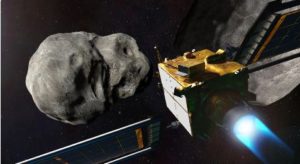
On September 26, the DART spacecraft — which stands for Double Asteroid Redirection Test — slammed into Dimorphos, an asteroid of around 160 meters (525 feet) in diameter which orbits Didymos, another, larger asteroid of around 780 meters in diameter. The asteroid pair orbits our sun every 2.1 years and poses no threat to our planet. That’s why scientists chose the pair for the world’s first attempt to change the position of a celestial body. The collision marked the end of part one of the DART mission, a 10-month space journey to autonomously impact and deflect a non-hazardous asteroid.
The mission, which was seven years in the making and cost around $330 million (€339 million), also marked the world’s first test of a process designed to stop a potential doomsday meteorite collision with Earth. NASA also hopes it will provide new data on what scientists call “planetary defense.” How to defend the planet? Kinetic impact with a spacecraft is just one way to defend the planet. Should an approaching object be detected early, a spacecraft could fly alongside it long enough to redirect its path, using the ship’s gravitational pull and creating what’s known as a gravity tractor. Another option would be to launch nuclear explosives to redirect or destroy an asteroid. NASA believes such weapons should be used at a distance to avoid blasting the asteroid into pieces, which could further endanger Earth.




 Driving Naari Programme launched in Chandigarh
Driving Naari Programme launched in Chandigarh






























